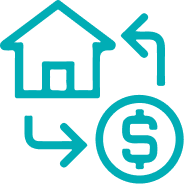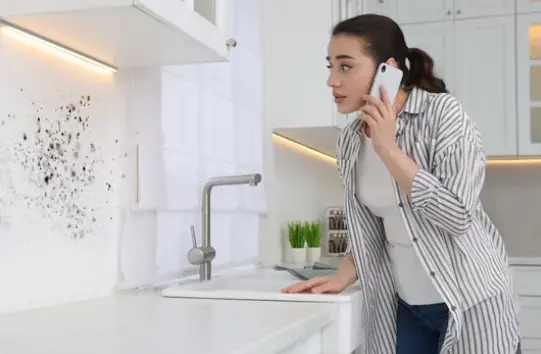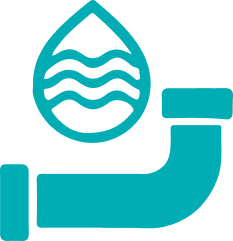Emergency Mold Assessment
Immediate Solutions for Urgent Situations
Mold issues can escalate rapidly, posing significant health risks and structural damage if left unaddressed. An emergency mold assessment provides a fast and thorough evaluation of your property, ensuring prompt identification of mold contamination and guiding immediate remediation efforts. Acting quickly in urgent situations can prevent severe consequences for both occupants and the property itself.
"*" indicates required fields
When is an Emergency Mold Assessment Required?

Flooding or Water Damage
Mold can start growing within 24–48 hours after water intrusion. An emergency assessment is critical to identify and address mold growth early, especially in areas affected by floods, plumbing leaks, or burst pipes.

Health Complaints
When occupants experience sudden respiratory issues, allergies, or other mold-related health symptoms, an urgent assessment is necessary to determine if mold exposure is the cause.

Visible Mold Growth
Rapidly spreading mold or extensive visible growth requires immediate evaluation to prevent further contamination.

Odor Detection
A persistent musty smell can indicate hidden mold. An emergency assessment helps locate and address the source before it spreads further.

Real Estate Transactions
If mold is suspected during a property sale or rental, a quick assessment ensures compliance and prevents delays.

Regulatory or Insurance Deadlines
Situations requiring immediate compliance with mold-related regulations or insurance claims demand urgent testing and reporting.
What Happens If an Emergency Mold Assessment is not Done in Time?
Health Risks Escalate
Prolonged exposure to mold, especially toxic species like Stachybotrys (black mold), can lead to severe health issues, particularly for children, the elderly, and individuals with weakened immune systems.
Increased Remediation Costs
Delays allow mold to spread deeper into walls, floors, and HVAC systems, making remediation more complex and expensive.
Structural Damage
Mold can weaken building materials over time, leading to costly repairs and potential safety hazards.
Legal and Compliance Issues
Failure to address mold promptly may result in legal action from tenants, regulatory fines, or rejection of insurance claims.
Property Value Decline
Unresolved mold issues can significantly reduce property value, complicate sales, and deter potential buyers or tenants.
What Does an Emergency Mold Assessment Include?
Rapid Response: Immediate scheduling of inspection to address the situation as quickly as possible.
Visual Inspection: Thorough evaluation of visible mold, water damage, and high-risk areas such as basements, crawl spaces, and HVAC systems.
Air and Surface Sampling: Testing for mold spores in the air and on surfaces to determine contamination levels.
Moisture Detection: Identification of hidden moisture sources that may be fueling mold growth.
Detailed Reporting: Comprehensive findings and urgent recommendations for remediation to resolve the issue quickly and effectively.

Why Choose PITS Environmental?

Accredited Expertise
Our lab meets stringent standards, ensuring accuracy and reliability.

Advanced Technology
We utilize state-of-the-art instruments for precise analysis.

Tailored Solutions
Testing services customized to your specific agricultural needs.

Fast Turnaround
Timely results to help you make critical decisions without delay.
Reliable Water and Air Quality Testing Services
Protect your environment with our specialized water and air quality testing solutions, offering comprehensive analysis to detect contaminants, convenient sample collection, and on-site testing for immediate results. Contact us today to schedule a consultation or on-site visit and take the first step toward a healthier, safer environment!
Frequently Asked Questions
What are the signs of a mold problem?
Common signs include a musty odor, visible mold growth, water stains, or persistent allergic reactions such as sneezing, coughing, and eye irritation when indoors.
What causes mold growth?
Mold typically grows in areas with high humidity or moisture, such as basements, bathrooms, kitchens, and poorly ventilated spaces. Leaks, flooding, or condensation can also contribute to mold growth.
How is a mold assessment conducted?
We begin with a visual inspection, followed by air and surface sampling to identify mold species and contamination levels. Moisture mapping and detailed reporting are also part of the process.
What should I do if mold is detected?
If mold is found, our detailed report will provide recommendations for remediation. It’s crucial to address the source of moisture and consult professional remediation services to eliminate mold safely.
How often should I have a mold assessment?
We recommend assessments during property purchases, after water damage, or when signs of mold are evident. For high-risk properties or environments, annual checks are advisable.
Is mold testing necessary if I can see mold?
Yes, testing can identify the type and concentration of mold, which helps in determining the severity of the problem and the best remediation approach.
How long does the mold assessment process take?
The assessment typically takes 2-4 hours, depending on the property size and complexity. Results from mold testing are usually available within 3-5 business days.
Do you provide mold remediation services?
No, we specialize in assessment and testing. However, we can recommend trusted professionals for remediation.
Request a Test or Consultation
Your Environment, Our Priority – Fill out the form below, and our team will get back to you as soon as possible.
"*" indicates required fields





